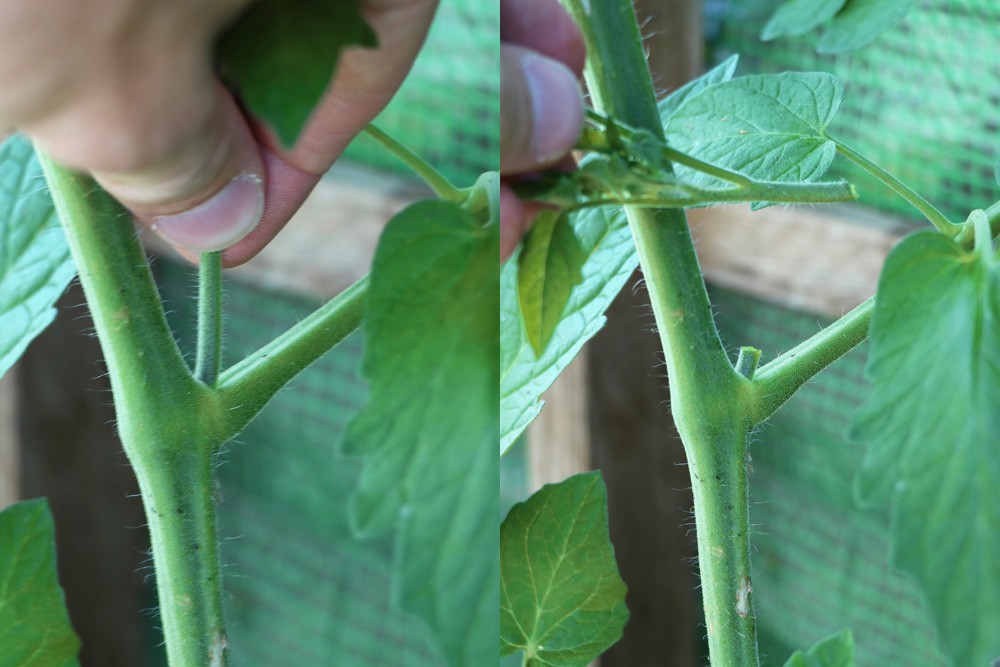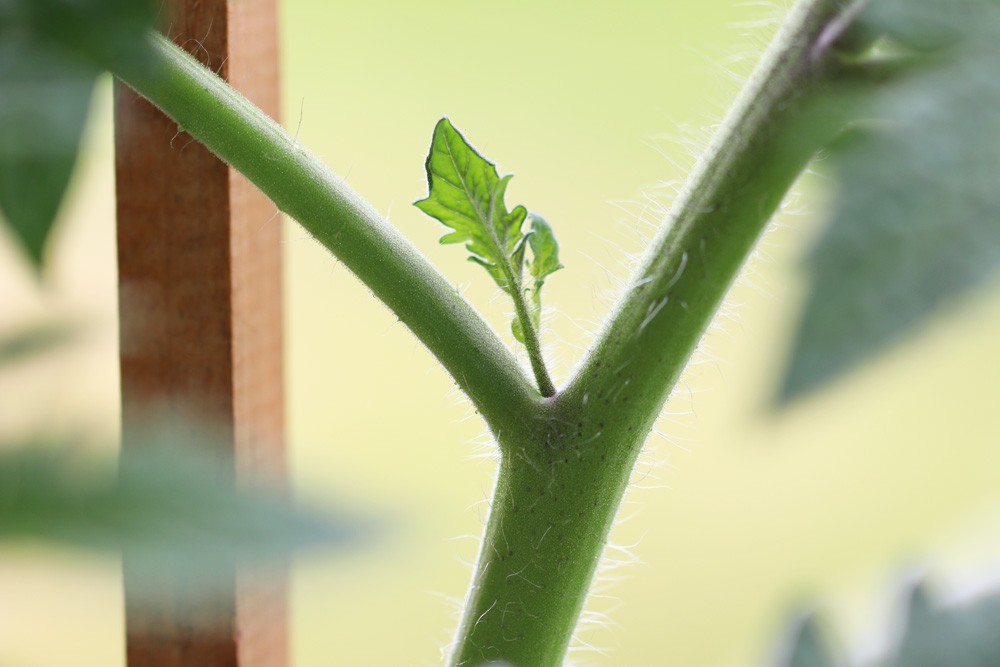Side shoots – the gardener also speaks of stingy shoots – you should regularly break out tomatoes. This procedure, called “pricking out”, keeps the plants healthy and ensures a bountiful harvest, as the main shoot can develop better, as well as ensuring an adequate supply of light and water. Without pricking out, the fruits will remain smaller and the harvest will be smaller – but not for all tomato varieties. So which shoots need to be removed – and how many exactly? And can you grow new tomato plants from the removed shoots?
Contents
Why remove shoots?
The so-called stingy shoots are unwanted secondary shoots that grow between the stem and the main shoots or leaves of tomato plants. They are easy to spot, as they develop directly from the leaf axils. If you leave the side shoots, the plant develops very bushy and puts all its strength into the development of all shoots. As a result, smaller fruits are formed, some of which do not ripen at all. In addition, by breaking off the side shoots, a single main shoot develops that is easier to support (and therefore less likely to break off) and is supplied with more light, air and water. The fruits growing on it therefore receive more water and nutrients, which is why they become larger and more aromatic.
How to remove stingy shoots?
In any case, do not cut the shoots with a knife or scissors, but carefully take them between your thumb and forefinger and break them out. Breaking them out causes less injury to the plant than cutting, plus the wound can heal faster afterwards. Keep the injuries as small as possible and in no case damage the main shoot – such wounds are often entry points for pathogens and attract pests. They heal especially quickly if you do the pruning on sunny, breezy days.
How many shoots to remove – timing?
The first stingy shoots have already developed three to four weeks after planting. Since they often develop flowers from a length of about ten centimeters – and then it becomes difficult to remove them without damaging the plant tissue – you should break them out from this time. At best, check your tomato plants every three to four days for new stingy shoots, which you then remove immediately.

Basically, all stingy shoots are removed, but the main shoots you leave all. How many of these side shoots a tomato plant develops varies greatly and depends on the variety as well as soil conditions, weather conditions and other growth factors. It is usually easier with tomatoes grown in pots, because many fewer stingy shoots often develop under these restricted growing conditions. In addition, as soon as the main shoot reaches the end of the support, you should clip its tip. This also serves to better develop large and aromatic fruits.
Tomato plants from stingy shoots?
You can grow more tomato plants from stingy shoots that have broken out early in the growing season by planting the broken pieces as cuttings. However, this only works if the plants are given enough time to develop – so you should have the shoots planted by the end of June at the latest. After that, the fruits would most likely not ripen.
Here’s how to turn stubbed-out side shoots into young tomato plants:
- Select a side shoot with a strong base and many leaves.
- It should not have developed flowers yet.
- Carefully break it out.
- Place it in a container with clean water.
- Choose a dark container with little light.
- Change the water daily.
- Roots will appear after about a week.
- Now pot the cutting in tomato soil.
- Water the plant well.
- Place it in the shade until it has grown.
You can also grow new plants from cut main shoots that have grown so long – only those without inflorescences, of course! – you can grow new plants. This is best done when the shoots are at least 30 centimeters long.
What varieties of tomatoes do not prune?
Not all tomatoes need to be pruned. Basically, pruning is only necessary for so-called stake tomatoes and other large-fruited varieties, which by nature tend to form few branches and instead strive upwards. In addition, there are many varieties that develop many flowers or inflorescences and numerous ripe fruits even without breaking out the side shoots. This is especially true of wild tomatoes and bushy and hanging varieties.
You do not need to break out these tomatoes:
Wild tomatoes
Wild tomatoes branch very strongly and repeatedly form new inflorescences up to 20 centimeters long throughout the summer. These develop into numerous fruits, usually about the size of a marble. If you were to break off the side shoots here, the harvest would be significantly smaller. It is therefore best to simply let wild tomato varieties grow! Popular and high-yielding varieties include red or yellow currant tomatoes and the popular ‘Red Marble’.
Bush tomatoes
Bushy growth with many side shoots is also typical of bush tomatoes. However, varieties such as ‘Balkonstar’, ‘Tumbling Tom Red’, ‘Tumbling Tom Yellow’ and ‘Gold Nugget’ develop larger fruits than wild tomatoes, which can weigh up to 30 grams depending on the variety. Again, pricking out would reduce the harvest. By the way, bush and cocktail tomatoes do not need to be budded out either.
Ampeltomat
These are bushy tomato varieties, but they are not supported, but grown in a plant hanging basket. Since the formation of side shoots is desired, their removal would be counterproductive.
When to pinch out flowers & leaves?
Towards the end of the summer, you should also pinch out the flowers and inflorescences, because the fruits that develop from them would not ripen in time. If you do not remove these late inflorescences, the plant will put too much energy into forming all the fruits – with the result that fewer tomatoes will ripen in the end. In addition to the flowers, you should also regularly remove leaves that are diseased, damaged or growing too close to the ground. This measure serves to prevent diseases, mainly fungal infections.


